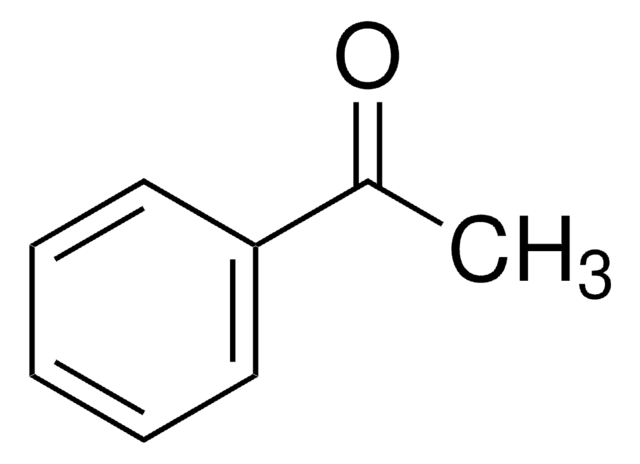121800-M
Advanced Glycation Endproduct-BSA
AGE-BSA has been reported to induce apoptosis in cultured human umbilical vein endothelial cells and inhibit nitric oxide synthase activity in proximal tubular epithelial cells.
Sinónimos:
AGE-BSA
Iniciar sesiónpara Ver la Fijación de precios por contrato y de la organización
About This Item
Código UNSPSC:
12352202
NACRES:
NA.25
Productos recomendados
Nivel de calidad
Análisis
≥95% (SDS-PAGE)
formulario
liquid
fabricante / nombre comercial
Calbiochem®
condiciones de almacenamiento
OK to freeze
avoid repeated freeze/thaw cycles
temp. de almacenamiento
−70°C
Descripción general
Prepared by reacting BSA with glycoaldehyde under sterile conditions. Glycated-BSA shows a 5,000 - 10,000% increase in fluorescence as compared to normal BSA (confirmed by fluorescence spectrophotometry, excitation/emission 370/440 nm). AGE-BSA has been reported to induce apoptosis in cultured human umbilical vein endothelial cells and inhibit nitric oxide synthase activity in proximal tubular epithelial cells. Advanced glycation end products and their receptors have been implicated in the pathogenesis of diabetes, induction of proinflammatory cytokines, and stimulation of smooth muscle proliferation, and fibronectin production.
Prepared by reacting bovine serum albumin (BSA) with glycoaldehyde under sterile conditions. Fluorescence of AGE-BSA is confirmed by fluorescence spectrophotometry, excitation/emission = 370/440 nm. Glycated BSA shows a 5000-10,000% increase in fluorescence compared to control BSA. AGE and their receptors have been implicated in the pathogenesis of diabetes, induction of pro-inflammatory cytokines, and stimulation of smooth muscle proliferation and fibronectin production. AGE-BSA has also been shown to induce apoptosis in cultured human umbilical vein endothelial cells (HUVEC) and inhibit nitric oxide synthase activity in proximal tubular epithelial cells of the kidney.
Advertencia
Toxicity: Standard Handling (A)
Forma física
In sterile-filtered PBS.
Otras notas
Okamoto, T., et al. 2002. Microvasc. Res.63, 186.
Ohgami, N., et al. 2001. J. Biol. Chem.276, 3195.
Wang, R., et al. 2001. J. Nippon Med. Sch.68, 472.
Sakata, N., et al. 2000. J. Atheroscler. Thromb.7, 169.
Verbeke, P., et al. 2000. Biochim. Biophys. Acta1502, 481.
Farboud, B., et al. 1999. Mol. Vis.5, 11.
Huang, J.-S., et al. 1999. Biochem. J.342, 231.
Min, C., et al. 1999. Diabetes Res. Clin. Pract.46, 197.
Neumann, A., et al. 1999. FEBS Lett.453, 283.
Stitt, A.W., et al. 1999. Biochem. Biophys. Res. Commun.256, 549.
Nazaimoon, W. and Bak, K. 1998. Malays. J. Pathol.20, 83.
Ohgami, N., et al. 2001. J. Biol. Chem.276, 3195.
Wang, R., et al. 2001. J. Nippon Med. Sch.68, 472.
Sakata, N., et al. 2000. J. Atheroscler. Thromb.7, 169.
Verbeke, P., et al. 2000. Biochim. Biophys. Acta1502, 481.
Farboud, B., et al. 1999. Mol. Vis.5, 11.
Huang, J.-S., et al. 1999. Biochem. J.342, 231.
Min, C., et al. 1999. Diabetes Res. Clin. Pract.46, 197.
Neumann, A., et al. 1999. FEBS Lett.453, 283.
Stitt, A.W., et al. 1999. Biochem. Biophys. Res. Commun.256, 549.
Nazaimoon, W. and Bak, K. 1998. Malays. J. Pathol.20, 83.
Información legal
CALBIOCHEM is a registered trademark of Merck KGaA, Darmstadt, Germany
Código de clase de almacenamiento
12 - Non Combustible Liquids
Clase de riesgo para el agua (WGK)
WGK 2
Punto de inflamabilidad (°F)
Not applicable
Punto de inflamabilidad (°C)
Not applicable
Certificados de análisis (COA)
Busque Certificados de análisis (COA) introduciendo el número de lote del producto. Los números de lote se encuentran en la etiqueta del producto después de las palabras «Lot» o «Batch»
¿Ya tiene este producto?
Encuentre la documentación para los productos que ha comprado recientemente en la Biblioteca de documentos.
Nuestro equipo de científicos tiene experiencia en todas las áreas de investigación: Ciencias de la vida, Ciencia de los materiales, Síntesis química, Cromatografía, Analítica y muchas otras.
Póngase en contacto con el Servicio técnico








